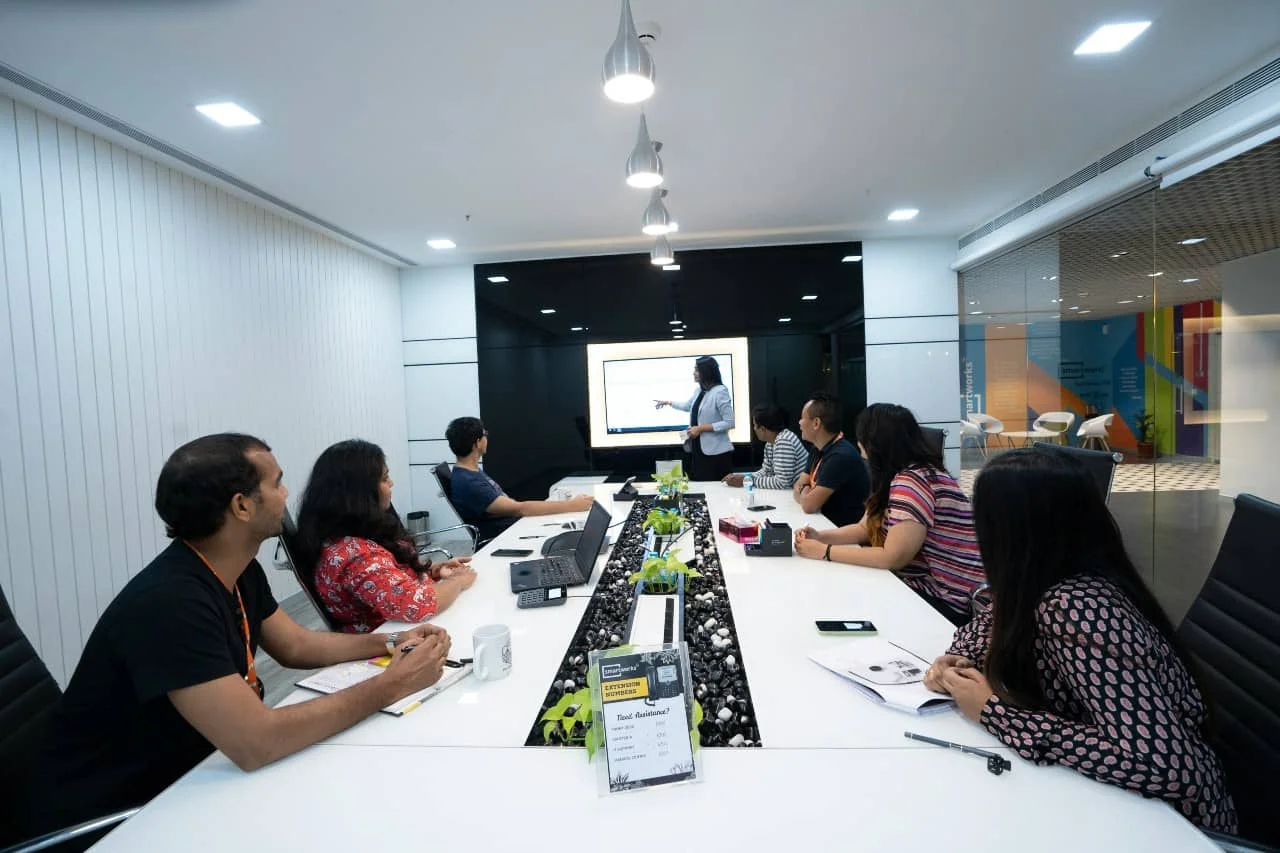What is Leadership Development? The Process, Who it's for, & Why it's Important
What is Leadership Development?
Leadership development is the process of enhancing the leadership abilities of
any member of an organization. Honing, developing, and effectively applying
good leadership is a key part of any leaders’ job and success. Leadership
development is the process of developing and refining those key proficiencies.
When focusing on leadership development, you develop the skill sets needed to
better perform roles in leadership positions. There is no one-size-fits-all
approach to leadership development. This is particularly true with leadership
coaching, which is the most effective way to accelerate leadership
performance. Leadership coaching is a tailored approach utilizing assessments,
individualized goals, and one-on-one relationships which is are a big part of
its impact.
Leadership development is meant to help leaders in a variety of roles from
individual contributors to C suite executives better lead and improve
leadership skills to meet new demands. Effective leaders are able to motivate
not only people they formally lead but engage peers and others over whom they
lack any formal authority.
Why is leadership development Important?
Leadership development is important because the leadership abilities of
business leaders influence the outcome of employees’ activities at every job
level. Without the resources and skills needed to lead effectively, entire
organizations struggle unnecessarily.
Leadership is applied in many ways in large organizations. As a leader, you
will eventually be expected to take on new leadership initiatives. Leadership
development is meant to help prepare you for the wide range of demands and new
challenges that can be placed upon you.
Future Leaders: Long-Term Employee Retention
Beyond the demands of taking on leadership roles, there are secondary benefits
to leadership development. One of the more valuable benefits in the modern,
dynamic, hard skills-based workplace is employee retention. To be able to
retain top talent is an important goal for a competitive company.
The best employees won’t want to stay in the same place for their entire
careers. They will want to have a stronger positive impact and thus think
about their future prospects. One 2016 LinkedIn study found that the top
reason people left their jobs was a lack of career advancement opportunities.
Investing in employees through helping to develop their leadership skills can
be an important part of a larger employee retention strategy.
Return On Investment
One of the main reasons companies are hesitant to engage in leadership
development is the simple question of cost. Customer satisfaction ultimately
leans on ROI, after all. This concern may lead them to opt for small-scale
leadership development, or in some cases to forgo the process entirely.
The best leadership development programs understand this and actually work on
making their services a good investment with clear ROI for the organizations
they work with.
Let’s delve into the many specific details of leadership development.
What Are The Leadership Development Skills?
These are the skills that get improved in the process of leadership
development.
Leadership Skills
Leadership skills are soft skills that are applied by great leaders in any
leadership situation. Tied closely with communication and influence, the
leadership aspect is about establishing yourself as the authority figure whom
team members should look up to and defer to.
Our Programs focus heavily on key competencies like:
Influencing
Influence skills are needed to influence others on your team to think alike
and connect with your “shared reality”. Influence, by definition, is your
ability to impact the thoughts and actions of others. Great influencers have
the potential to become great leaders.
Strategic Thinking
Strategic thinking leads to the creation of a strategic plan. This in turn
leads to better strategy execution. Strategy execution affects the day-to-day
structures and systems in organizations. So, it should be no surprise that
strategic thinking is a key leadership ability. Actually applying strategic
thinking in a practical way in dynamic organizations is a skill and
responsibility which must be enhanced when developing leaders.
Delegation
The art of delegation is one where even good leaders can struggle. Delegation
as a part of leadership development is about delegating tasks in a way that:
- Puts the right people in the right places
- Motivates employees to perform as best they can
The demands of delegation in a company require leaders to know how to
influence people. The ability to know what makes people tick and how to talk
to them, and if need be, challenge them, is key to keeping a business running.
Coaching and Mentoring
Coaching and mentoring are required of many C Suite and other employees who
are in the position to develop and help retain talent. To lead people is often
to enable them to take on leadership responsibilities of their own.
In good development programs, unlimited access to coaching is necessary at
times. Likewise, leaders must sometimes conduct in depth interviews and apply
other methods and skills to develop new talent.
Executive Presence
This is a critical skill for C Suite and in fact all leaders to focus on.
“Executive presence” is an aspect of positional leadership (in this case,
leading down). The topic has been explored in detail by several leaders and
authors. What it means in terms of leadership is linking your merits as a
competent individual who has assumed a leadership role and your practical
application of leadership.
Resilience
The importance of resilience is self-explanatory. Leaders must constantly
learn how to better handle unexpected situations in the workplace. A lack of
resilience in an organization’s leadership harms relationships and the
organization more broadly.
Secondary Leader Competencies
There are other core leadership competencies that are improved naturally as a
side effect of professional leadership development training.
Communication Skills
These skills are key to both leadership and influence because without them you
cannot be a good leader. Effective communication skills include:
- Listening skills (not just listening, but inferring and reading into what people are not necessarily communicating effectively.)
- Speaking skills (tone, decisiveness, respect.)
- Observational skills
- Empathy skills (you must show that you’re empathetic and care, but you must walk the tightrope between robotic coldness and inappropriate warmness.)
Negotiation Skills
Negotiation skills are a specific category that lends itself to proficient
leadership and influence. It’s a given that leaders’ incentives may not always
align with the incentives of those they’re exercising leadership over. Knowing
how to negotiate can easily become one of the key leadership skills in a wide
variety of leadership roles.
Accountability
Leadership and accountability go hand-in-hand. An in-depth understanding of
accountability and leadership expectations is necessary for leaders.
Performance management is a corporate management concept that covers practices
for managing employees’ work. It is both a skill set of delegating work and of
monitoring and evaluating work.
Crisis Management
Leaders must often remain leaders through good times and bad. Crisis
management is the leadership skill that covers how leaders confront unexpected
and disruptive events.
Leaders must become proficient in leading through periods of crisis.
Change Management
We’ve gone over how modern organizations are increasingly dynamic. Change
management is a leadership skill that covers navigating change and ensuring
the business stays afloat on the new course.
Goal Setting
Goal setting as an aspect of leadership means:
- Seeing the big picture
- Turning an idea into an actionable process
- Having reasonable expectations
- Aligning individual/team goals and incentives
Goal setting as a leader is setting a balance between:
- Individuals’ and company goals
- Individuals’ realistic capabilities and company demands
Talent Development
This skill is about discovering competencies and creating high-performing
employees. It is the other end of talent management. Talent management is the
anticipation of human capital requirements and how you plan to meet those
needs.
But Perhaps Most Importantly Leadership Development Helps Attract & Retain Top Talent
Leadership development is great for talent retention. Lack of career
advancement opportunities was found to be the number one reason people
voluntarily leave their jobs. The 2016 LinkedIn study found that was the
reason in 43% of cases.
What is a Leadership Development Program?
Leadership development programs are meant to help create a company become
better-run. They can range in comprehensiveness, but the goal is always the
same; to train better leaders for the company.
A leadership development program is about developing leadership competencies.
That means each program helps students develop skills such as leadership
acumen and the leadership skills listed above.
With a more comprehensive leadership development program, the goals expand to
include a shift in organizational culture. Employees in senior positions and
others gain access to the coaching they need to become competent future
leaders when their job calls for it.
Increasingly, the leadership development industry is responding to the needs
of a more technical and dynamic workforce. As employees become increasingly
specialized in their skills, competent leadership is needed to utilize their
skills.
So, leadership development is about creating other leaders out of any portion
of an organization’s employees. Then, it is also about navigating change in
organizational culture.
How is Leadership Developed?
Leadership is developed in a program by developing the key leadership skills
in individuals. It is a multi-stage process where organizations invest the
time and money needed to create over a set period. These programs are based on
modern leadership models leaning on empirical research and working with the
most modern technology.
What are the Components of Leadership Development?
The leadership development process starts with the essential part: assessing
current leadership and employees’ individual leadership competencies.
The framework of development is broken down into four sections:
Leadership Assessments
Leadership development starts with assessments. The first step is to determine
each student’s starting point. Each employee has their own strengths,
experiences, concerns, and competencies. So, many people will end up
developing unique skill sets, while there will normally be numbers of students
developing or improving similar skills.
By having employees undergo leadership assessments, a leadership development
program can identify opportunities for improvement. This then allows for
individual plans for the development of each future leader. Lastly, the
assessments create the baseline for comparisons and ongoing assessments once
the leadership development program is completed.
Prioritizing Objectives
Leadership development skills that can be taught and measured fall into four
categories:
- Leading self
- Leading others
- Leading the organization
- Leading implementation
Within the above categories, there are a total of 28 competencies that can be
developed. The second stage of a development program is identifying and
customizing them for each employee.
Based on the assessments conducted ahead of this step, the coach, future
leader, and their manager identify the three competencies best developed.
Then, they relate those development paths with the best paths for furthering
company objectives.
During this step, communication is key. The three parties must work together
to provide clear objectives and realistic expectations.
Applying New Learning
Success in a leadership development program is achieved through on-the-job
learning. Each student is provided a path tailored to their unique needs and
competencies. They are delivered as online courses, with new content unlocked
periodically. Once open, the content can be accessed online whenever the
student wishes. However, the student will also continue working with the
development coach. The coach works with the student one-on-one, supporting
their learning process and getting them to apply the lessons throughout the
work day.
Most of the success of each program comes in the same way: the student’s
testing of their new lessons inside the workplace. Application through
immersive learning is the only way to truly increase success. Students first
absorb new concepts and methods, then apply them in this third stage. The
online courses and coaches provide the context and guidance the student needs.
The coach is responsible for reinforcing connections between the course
materials and the student’s own work. This is a part of why the one-on-one
relationship between the coach and each student is key to the program’s
success.
Measuring Results
Of course, nothing here can be useful without success measurements and ongoing
post-course improvement. In fact, this stage is the one that separates the
good programs from the bad. A lack of tracking and measurement capacities is a
big problem for an organization hoping for genuine leadership development.
Technology-enabled tracking and measurement enables each student’s progress to
be followed. Within one program, all student’s results are broken into data
streams that are tracked, synthesized, and presented to administrators (who
have the relevant access permissions). The data being tracked includes:
- Individual goals
- Participation
- Engagement
- Goal progress
- Skill development
In addition, the software tracks the larger cohort to assess progress as a
group, not just tracking each individual. Big-picture tracking also includes
program-wide analytics, comparing one business with cohorts from other
organizations.
The metrics are set up to be able to identify skill gaps, strengths, and
developing opportunities. Organizations can focus on proactive decision-
making. This helps promote long-term performance development.
Each leadership development program will normally include a few reassessments.
These typically take place at the halfway mark and again at the end of the
program. They normally include in depth interviews and assessments of the
employees’ progress.
What are Examples of Leadership development?
Leadership development practices can be applied in a wide variety of
situations. For example…
Case #1
Company A’s HR Team is aware of ongoing conflicts between the VPs over work
procedures that some VPs are worried are inefficient. The HR leaders want to
provide their C suite with the specific skills they need for conflict
resolution . The conflict between the VPs seems to stem from basic
disagreements, but it’s clear that further unmet needs and perhaps even simple
personality conflicts are jeopardizing V-level management.
The HR leaders agree to introduce a development program. Over the course of
the program, communication abilities are developed/enhanced, giving each C
suite executive the ability to handle conflict resolution professionally while
enabling them to better address other underlying problems.
Case #2
Company B’s CEO wants to boost employee engagement throughout her
organization. Namely, she wants to improve employee retention and development
within the organizational culture. So, she organizes leadership development,
training all relevant staff to prepare for the necessary shift.
Develop Leaders at Your Organization
Developing leaders ensures the continuity of your organization. The next
generation of leaders will certainly take time to be developed. But to do so,
you need quality leadership development that addresses the possible
shortcomings of short-sighted attempts at development. Continuity requires
long-term follow ups.
With comprehensive, high-quality leadership development programs, leaders
benefit from enhanced:
- Communication in all workplace situations
- Positional and relational leadership
- Leadership skills
- Problem-solving
- Leadership innovation
Your organization also benefits as a whole through more proficient leadership
and an enhanced reputation. All leaders can benefit.
Senior Leaders
Achieving a vision is both more important and more difficult as a senior
leader. Development benefits for senior leaders include becoming more
inspirational, influential, and an enhanced presence.
Executives
Executives got to where they are by utilizing their strengths. But sometimes
those very strengths and differentiators that made them successful in the past
can become blind spots when over-utilized, or are no longer what is necessary
to succeed at the next level or have become obsolete as the organization grows
and adapts to ever changing market conditions.
Mid-Level Managers
Positional leadership is an important skillset for mid-level managers. Whether
it’s more effective meetings, team member management, or employee engagement,
mid-level managers have unique assessment and coaching needs.
First Time Managers
First-time managers are often forced to learn on the job. But there are
fundamental skills needed to capitalize on first-time managers’ positions.
High Potentials
Your organization can benefit from the potential of other employees. “High
potentials” expect a bit more than old-fashioned training. Training for these
employees includes more personalized and actionable development.
Women
Good leadership development programs are built with an understanding of the
unique challenges women leaders face. To meet those unique needs, specific
coaching tailored to current and rising women leaders is available.
Leadership Development Training vs Traditional Education
Traditional executive leadership education no longer prepares leadership for
modern challenges. Productive collaboration requires more communicative,
perceptual, and interpretive skills. However, most traditional executive
leadership education is based on discipline-based skills.
This way of developing leadership is now in a state of upheaval as CLOs make
sense of their annual training budgets.
What is learned isn’t necessarily applied. This is true of all studies, but
leadership positions require learning that is both applicable and measurable.
This is perhaps the most significant difference between traditional education
and modern leadership development programs. For example, this is reflected in
the methodology for assessing program participants.
360 Assessments
360-degree assessments are named after how participants receive qualitative
and quantitative feedback from all relevant perspectives. Those above, below,
and to the side of the leader provide feedback. While it’s a 3-sided
assessment, 360 assessments do cover all relevant angles.
Each 360 assessment has 3 parts:
- Collecting data
- Interpreting the collected data
- Acting on the interpretations
The bottom line of 360 assessments is that companies that volunteer for them
have a process to gather feedback that they could not get in any other way.
This then leads to (with a good follow-up process) a long-term plan for
improvement.
Modern Leadership Development Programs
Modern leadership development programs fill in the gaps left by outdated
processes, which include:
- A lack of adaptability in the modern dynamic business
- No continuity
- Balance between current workloads and the training’s demands
- A stagnant bottom line
A leadership development program built for the modern workplace hits the right
notes for the needs of all employees in a major role.
Why participate in a leadership development program?
Personalize Learning
Again, there cannot be a one-size-fits-all solution to leadership acumen.
Leadership development includes a personalized learning process, starting with
a personal assessment and nurtured by continuous one-on-one work with a coach.
Each leader in an organization already brings certain assets to the table,
while lacking in other areas.
Participating in a leadership development program can rectify these issues
with personalized coaching and learning for a more positive impact.
Measured Improvement
Critically, measuring success by the most up-to-date standards is important
throughout an entire course and beyond. The soft skills that any leader can
learn can (and are) easily forgotten with traditional development models.





